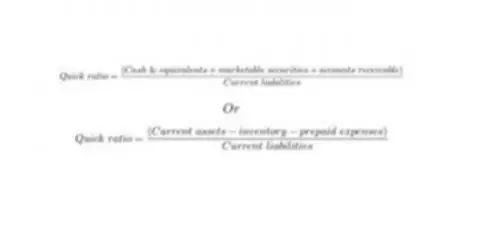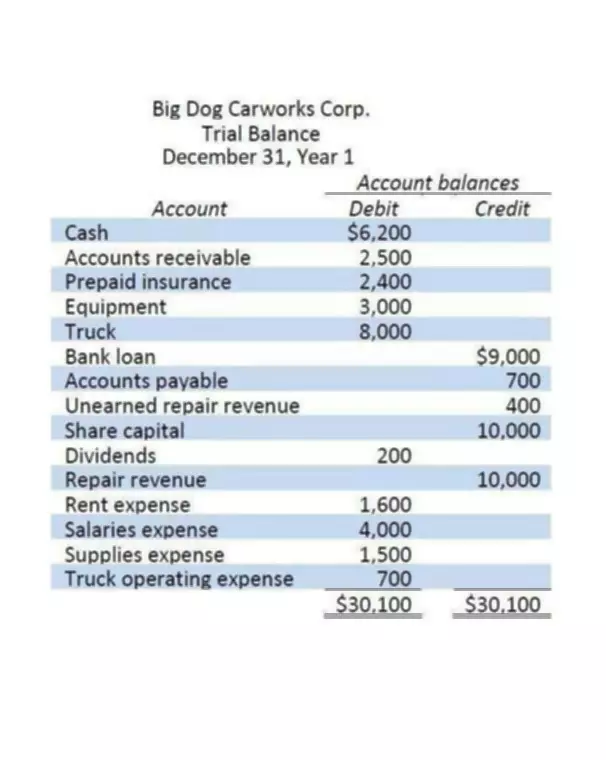Content
For instance, many auto insurance companies operate under prepaid schedules, so insured parties pay their full premiums for a 12-month period before the coverage actually starts. The same applies to many medical insurance companies—they prefer being paid upfront before they begin coverage. On July 1, the company receives a premium refund of $120 from the insurance company. The company records the refund with a debit to Cash and a credit to Prepaid Insurance. At December 31, the balance in Prepaid Insurance will be a credit balance of $120, consisting of the debit of $2,400 on January 1, the 12 monthly credits of $200 each, and the $120 credit on July 1. Prior to issuing the December 31 financial statements, the company must remove the $120 credit balance in Prepaid Insurance by debiting Prepaid Insurance and crediting Insurance Expense.
As future invoices come in, the company would recognize an expense and draw down the prepaid asset by the same amount. A small company has an insurance contract under which the total premium of $48,000 must be paid in advance for 12 months of coverage under a general liability insurance policy. In this example, the journal entry initial expense would be recorded as a debit to Prepaid prepaid insurance journal entry Expenses and a credit to Cash. It’s important to establish a system for tracking and managing prepaid expenses, such as using accounting software or a spreadsheet. Regularly reviewing and reconciling accounts can also help catch any errors or discrepancies. Consulting with a CPA or financial analyst can also provide guidance and support in properly recording prepaid expenses.
Prepaid insurance explained
Prepaid expenses are used to purchase goods or services that are to be received in future; this frees up capital for other expenses. The debit balance at the end of the year is shown on the asset side of the balance sheet and the amount is carried forward to the next year. Prepaid Expenses are referred to as representative personal accounts (accounts that represent a certain person or group of people). According to the rule for personal accounts, we have to debit the receiver of the benefit and credit the giver of the same. The most important calculation regarding prepaid insurance reflects the unexpired portion of the policy.
- In the insurance example, the service provided to the business is liability policy coverage.
- As explained above, the prepaid expense initial entry does not affect the financial statements as it is a transaction between two asset accounts.
- Prepaid expenses reflect the cost of assets whose benefits will be realised later during future accounting periods.
- When amortizing prepaid expenses, companies must debit the expense account and credit the prepaid expense account.
- Make the most of your team’s time by automating accounts receivables tasks and using data to drive priority, action, and results.
- As part of the rental agreement, the landlord requests the business prepay six months’ rent before occupying the property.
But if you pay your rent for the entire upcoming year, that is a prepaid expense and needs to be recorded as one. This enables the most accurate reflection of assets in the short term, as well as profit. The concept of prepaids is not used in the cash method of accounting, which is most often used by small businesses.
Prepaid Expenses
Prepaid expense amortization is the process of gradually recognising the expense of a prepaid asset over the period it is consumed. When a business pays for goods or services in advance, such as rent or insurance, the payment is initially recorded as a prepaid expense. Sometimes, businesses prepay expenses because they can receive a discount for prepayment. Prepaid expenses may also provide a benefit to a business by relieving the obligation of payment for future accounting periods. There may also be tax benefits concerning prepaid expenses, however, all organizations must follow the proper rules related to tax deductions. Prepaid expenses are future expenses that are paid in advance, such as rent or insurance.
- At the end of each accounting period, a journal entry is posted for the expense incurred over that period, according to the schedule.
- Prepaid insurance is important because a business should correctly record all of its transactions and resources to have accurate financial statements.
- As the expense is paid beforehand, it is treated as a prepaid expense and recorded accordingly.
- If you believe that using summary entries can help you more accurately account for your business transactions, you might want to give Synder a try in a Daily Summary sync mode.
- In the meantime, an amortisation schedule corresponding to the actual realisation of the prepaid expenses or the benefits of the prepaid asset will be created as well.
- This streamlines the remaining steps in the process of accounting for prepaid items.
- For instance, many auto insurance companies operate under prepaid schedules, so insured parties pay their full premiums for a 12-month period before the coverage actually starts.
- So every company treats it as an asset, and when the period comes, the appropriate amount is shown as an expense under the Insurance expense.
Remember, to track prepaid expenses properly, they need to be recorded in your general ledger as a prepaid expense asset, with a portion of the prepaid asset accounted for each month as an expense. When January comes around, you would then debit $2,000 as rent expense for January and credit your prepaid rent expense account for $2,000, leaving you with a balance of $22,000. The $2,000 you expensed for January’s rent appears on your income statement as rent expense, while your prepaid rent asset account is reduced by $2,000 on your balance sheet. At the end of the year, you will have expensed the entire $24,000, and your prepaid rent account will have a $0 balance.
How Do Prepaid Expenses and Accrued Expenses Vary?
BlackLine’s glossary provides descriptions for industry words and phrases, answers to frequently asked questions, and links to additional resources. It’s time to embrace modern accounting technology to save time, reduce risk, and create capacity to focus your time on what matters most. BlackLine’s foundation for modern accounting creates a streamlined and automated close. We’re dedicated to delivering the most value in the shortest amount of time, equipping you to not only control close chaos, but also foster F&A excellence. Understand customer data and performance behaviors to minimize the risk of bad debt and the impact of late payments. Monitor changes in real time to identify and analyze customer risk signals.



